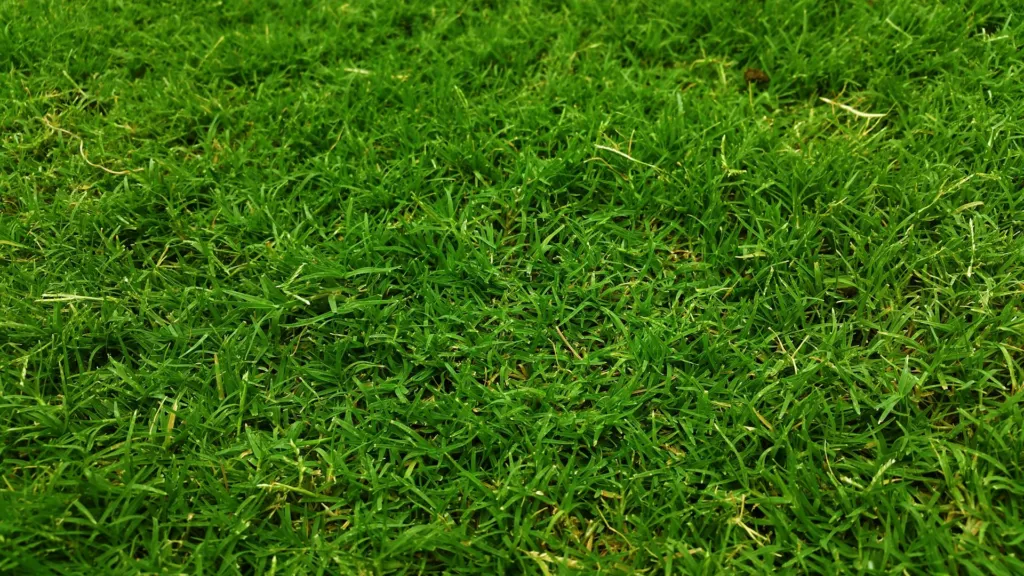
What Makes Grass Greener in Some Spots?
Uncover the Secrets of Uniformly Green Lawns
A gorgeous, green lawn is the dream. But some areas green up faster than others. Uneven growth can be frustrating, especially when you’re trying to get grass green fast and maintain a picture-perfect yard.
So what makes grass greener in some spots while others lag behind? Some of the factors are in your control. Others? Not so much. Let’s break down the reasons and what you can do to fix them.
Why Do Some Parts of Your Lawn Green Up Faster?
Several key factors influence how quickly (and how well) the grass becomes a vibrant green for homeowners in Alabama, Arkansas, Florida, Oklahoma, Tennessee, Georgia, and South Carolina.

Here’s What You Can’t Always Control
Your grass type
Different grass species grow at varying speeds. In spring, rising temperatures and increasing daylight cause cool-season grasses to green up more quickly, while warm-season varieties often take longer. If your lawn has mixed grass types, uneven greening is normal.
Moisture issues
Sunny areas dry out faster and may need more water. Shaded spots (under trees or roofs) stay damp longer, slowing growth. Plus, compacted soil (from foot traffic) resists water absorption, leaving grass thirsty.
Soil & nutrient deficiencies
Have a yellow-looking lawn? Low nitrogen may lead to this kind of discolored, patchy grass. Alkaline soil lawns can also lack iron, causing “bleached” areas on your lawn.
Sunlight exposure
Grass needs sunlight for chlorophyll production (the pigment that keeps it green). Shaded areas grow more slowly and may appear darker green as grass compensates.
Temperature variations
Ever wonder why grass near driveways or sidewalks seems to green up sooner? Its contact with concrete may cause it to warm up faster. Additionally, soil temperature and air temperature are different, but they both contribute to the health of your grass.
- Warm-season grasses (Bermuda, Bahia, St. Augustine, and zoysia) grow best with soil temperatures between 60 and 85 degrees Fahrenheit.
- Cool-season grasses (fescue, ryegrass, bentgrass, and Kentucky bluegrass) grow best with soil temperatures between 50 and 75 degrees Fahrenheit.
Above or below that range? Growth slows or stops because the grass can’t effectively use nutrients and water.
Here’s What You Can Control to Get Grass Green Fast
Some factors are out of your hands. However, the following steps can help even out your lawn’s color and health.
- Contact Fairway Lawns
- We’ll help prevent weeds, pests, and fungal diseases from causing discoloration
- We fertilize strategically during peak grass growing periods
- We can improve your soil health through aeration, soil amendments, and more
- Manage Shade & Traffic
- Trim tree branches to allow more sunlight.
- Regularly move lawn furniture to prevent dead spots.
- Redirect foot traffic to avoid soil compaction.
- Mow Correctly
- Keep grass at the ideal height for your turf type and climate.
- Mulch clippings to return nutrients to the soil.
- Never cut more than 1/3 of the grass blade length at once.
- Water Smartly
- Deep, infrequent watering encourages strong roots.
- Adjust sprinklers to avoid overwatering shade and underwatering sun-exposed areas.
- Check for dry spots and hand-water if needed.
- Clean Up After Your Dogs
- After your pup goes potty, flush the area with water to avoid circular yellow patches later.
- Train your dog to use a designated gravel or mulch area for “their business.”

What Makes Grass Greener? Fairway Lawns!
Want to get grass green fast and have a better chance of keeping it that way all season long? Get in touch with the professionals at Fairway Lawns. We proudly serve seven states and dozens of communities, ensuring high-quality lawn care and pest control services across the South:
- Huntsville, AL
- Birmingham, AL
- Bentonville, AR
- Bella Vista, AR
- Searcy, AR
- Jacksonville, AR
- Greenbriar, AR
- Beebe, AR
- Cabot, AR
- Rogers, AR
- Fayetteville, AR
- Conway, AR
- Springdale, AR
- Fort Smith, AR
- Little Rock, AR
- Jacksonville, FL
- Augusta, GA
- Tulsa, OK
- Columbia, SC
- Greenville, SC
- Charleston, SC
- Knoxville, TN
- Nashville, TN
- Memphis, TN